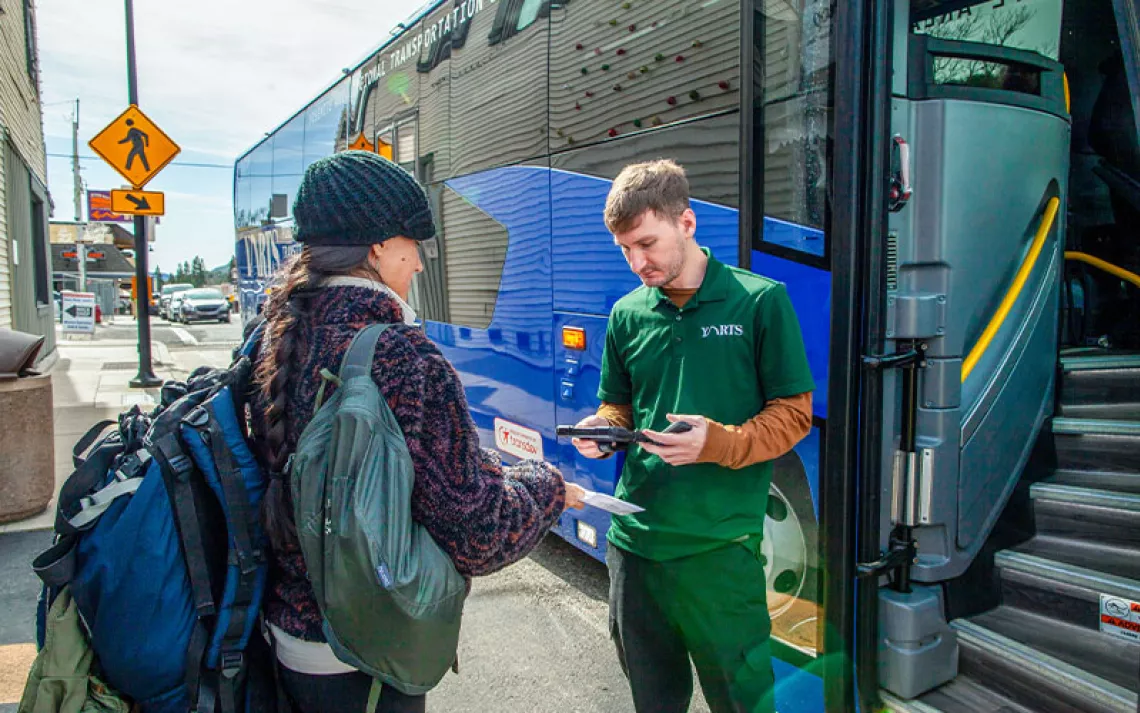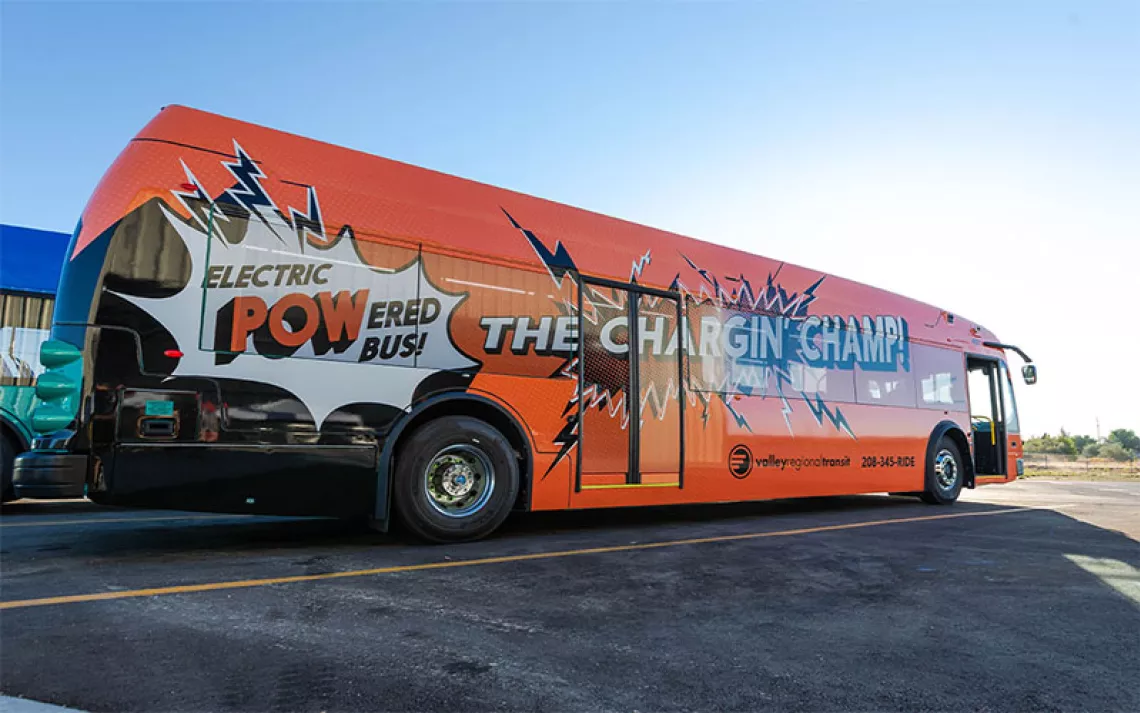Public Transit Toots Its Own Horn
Happy National Dump the Pump Day!

Photo by Alffoto/iStock
In his Budget Blueprint to Make America Great Again for the 2018 fiscal year, President Donald J. Trump proposes a 13 percent budget cut to the Department of Transportation. Specifically, it calls for a withdrawal of federal funds for Amtrak’s long-distance train service and a 45 percent cut to New Starts, which serves as a major source of funds for transit projects across the country. The fate of much of the public transportation in the United States looks pretty dismal.
What better time, then, to show our support for existing transportation projects in very practical, even celebratory ways—like participating in this year’s National Dump the Pump Day, which encourages drivers to forgo their cars for the day and instead commute via bus, light rail, train, ferry—you get the idea.
Every transit organization celebrates Dump the Pump Day in its own special way. Longview Transit, in eastern Texas, is giving out free bus passes. Tri Delta Transit, which services California’s Eastern Contra Costa County, is adding dramatic flair by having transit employees hop aboard to surprise passengers with $100 cash prizes. Ohio’s Greater Cleveland Regional Transit Authority has decided to extend National Dump the Pump Day into National Dump the Pump Month. The director of communications and public affairs for Chicago’s Regional Transportation Authority (RTA), Susan Massel, explains that the RTA’s participation in Dump the Pump Day is a “two-tiered effort: to say thank you to the people that ride every day and to encourage new ridership. Traveling on public transit for the first time can be hard, especially with experienced commuters who know where they’re going and aim to get there fast.”
The low gas prices of the last few years have not been kind to transit. Federal Highway Administration data shows that driving mileage increased for the fifth straight year, while transit use decreased last year in nearly every major U.S. city. Los Angeles, for example, saw a 7.6 percent decline in ridership.
But there were two cities where transit use rose instead of fell: Seattle saw ridership increase by 4.1 percent, and Houston saw an increase of 2.3 percent. Those increases are credited to changes of the most basic kind: Seattle, for example, increased light-rail services to areas that already saw significant pedestrian traffic and redesigned their bus routes to increase ride frequency and weekend accessibility.
A local transit agency can do a lot. But it can only do so much. According to a 2016 report released by Transit Center, a transit-oriented think tank, the power to grow public transit ridership often lies in the hands of policymakers, who can direct development to areas around pre-existing transit hubs and ensure that the streets leading to that transit are safe, easy, and enjoyable to walk to. Regular users walk to transit 80 percent of the time, and 50 percent of commuters and occasional riders do so, but many transit stops are not designed to be pleasant for pedestrians.
The individual decision to opt for public transit over a car, when combined with the same efforts on a nationwide scale, can contribute to a dramatic reduction in the nation’s annual carbon footprint: Public transit helps to reduce national carbon emissions by 37 million metric tons each year.
If, for instance, your work is not accessible by public transit or your kids are too young to ride to school on public transit on their own, you can still support the core goals of National Dump the Pump Day by carpooling or perhaps opting for a weekend activity that’s walkable from your home. The social, environmental, and economic benefits born of public transit may not be in President Trump’s vision of American “greatness,” but they can still be in yours.
 The Magazine of The Sierra Club
The Magazine of The Sierra Club



